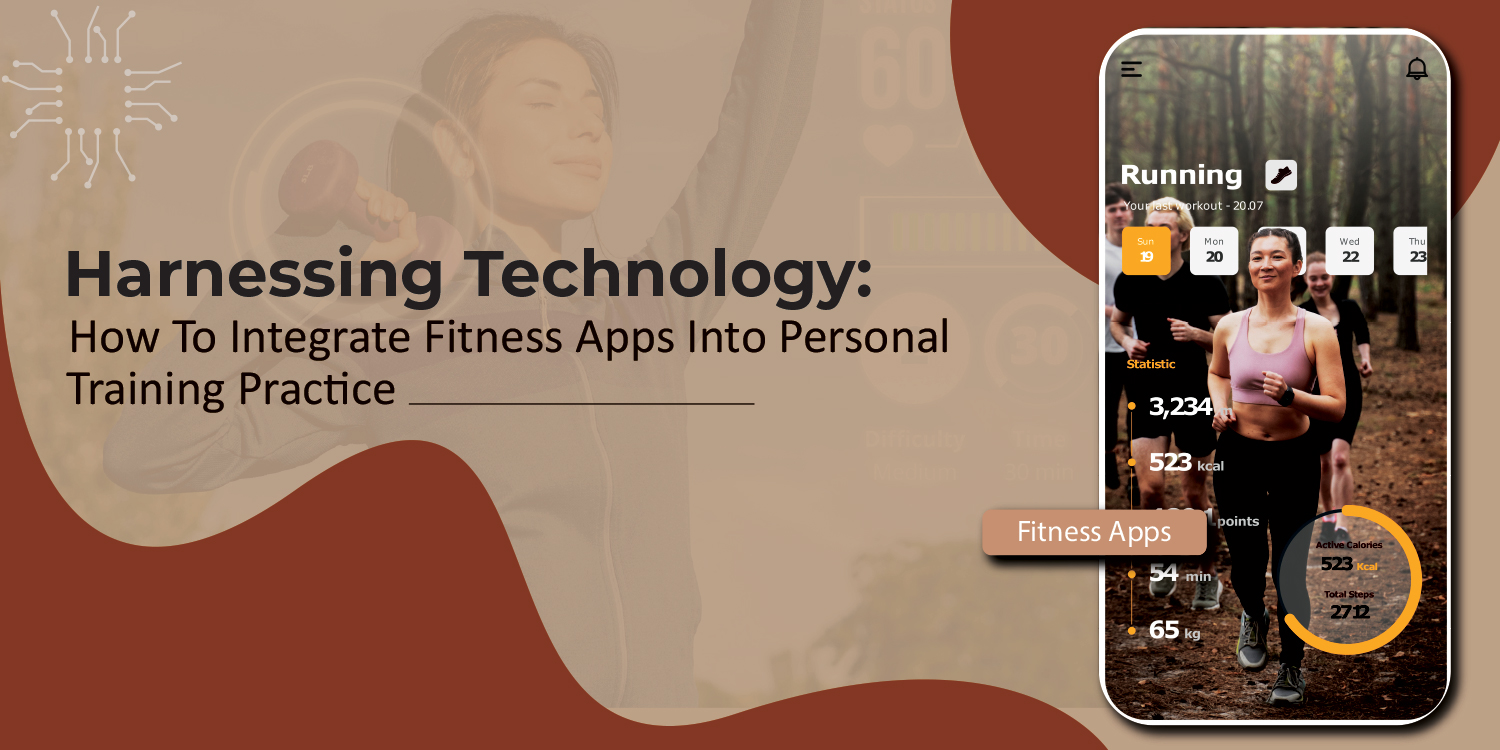In today’s digital age, technology has become an integral part of our lives, and the fitness industry is no exception. Fitness apps have gained popularity among individuals looking to track their progress, stay motivated, and achieve their fitness goals.
For NASM personal training experts, integrating these apps into their practice can offer numerous benefits, enhancing the client experience and delivering better training sessions. Here’s how to harness technology and integrate fitness apps into your personal training practice.
Personalized Training Plans
Fitness apps provide personal trainers with a powerful tool to create tailored training plans for their clients. These apps offer customizable workouts, exercise libraries, and progress-tracking features. This enables trainers to design programs that align with their clients’ specific goals, preferences, and fitness levels.
NASM certification sets the stage for creating great plans, but this tech takes it up a notch. By incorporating these apps into their practice, trainers can ensure that their clients receive individualized attention and guidance, enhancing their training sessions.
Real-Time Progress Tracking
One of the significant advantages of fitness apps is their ability to track and monitor clients’ progress in real-time. These apps allow trainers to view their clients’ workout logs, track their performance, and assess their progress seamlessly.
With access to accurate data, trainers can identify areas of improvement, make informed adjustments to training programs, and provide constructive feedback to their clients. Real-time progress tracking promotes accountability and helps trainers and clients stay motivated and engaged throughout their fitness journey.
Enhanced Communication and Support
Fitness apps often feature built-in communication tools, enabling personal trainers to stay in contact with their clients throughout the week. Through chat functionalities or message boards, trainers can offer guidance, answer questions, and provide support, even outside scheduled training sessions.
This increased level of communication fosters a stronger trainer-client relationship, as clients feel supported and connected to their trainers throughout their fitness journey. Regular communication also allows trainers to gather valuable feedback, address concerns promptly, and make necessary adjustments to ensure clients’ progress and satisfaction.
Nutritional Guidance and Meal Tracking
Many fitness apps offer comprehensive nutritional guidance and meal-tracking features. By integrating these tools into their practice, personal trainers can provide clients with a holistic approach to health and wellness.
Trainers can offer personalized meal plans, track their clients’ calorie intake, and educate them about proper nutrition. This integration creates a more comprehensive training experience, as appropriate dietary choices support clients’ fitness goals.
The ability to track meals and receive nutritional recommendations through a fitness app helps clients stay on track, promote healthy eating habits, and achieve their desired results faster.
Community Engagement and Motivation
Fitness apps often include social features that allow users to connect with a community of like-minded individuals pursuing similar fitness goals. By encouraging clients to join these communities, personal trainers can foster a sense of camaraderie and motivation among their clients.
Clients can share their progress, seek advice, and celebrate achievements with others, creating a supportive and inspiring environment. The sense of belonging to a community helps clients stay motivated, overcome challenges, and sustain long-term fitness habits.
Trainers can also actively engage with these communities, offering additional guidance and fostering a sense of accountability among their clients.
Data Analysis and Performance Assessment
Fitness apps generate a wealth of data that trainers can utilize to analyze their clients’ performance and assess their progress. These apps often provide detailed metrics, such as workout duration, intensity, heart rate, and calories burned.
By reviewing this data, trainers can identify patterns, track trends, and gain valuable insights into their clients’ training effectiveness.
This data-driven approach allows trainers to make data-backed decisions, fine-tune training plans, and optimize workouts for maximum results. Additionally, trainers can use this information to set benchmarks and motivate clients by showcasing their progress over time.
Remote Training and Flexibility
Integrating fitness apps into personal training practice offers the flexibility of remote training sessions. These apps enable trainers to remotely monitor their clients’ workouts, provide guidance, and offer support from anywhere. Remote training is particularly beneficial for clients who may have busy schedules, travel frequently, or prefer the convenience of training from home.
Fitness apps allow trainers to deliver personalized workouts, track progress, and maintain regular communication without the need for in-person sessions. This flexibility expands the reach of personal trainers, allowing them to cater to a broader clientele and offer services beyond geographical boundaries.
Take Advantage of the Fitness Technology Movement
In this digital era, harnessing technology and integrating fitness apps into personal training practice is not just a trend — it’s a necessity.
So, seize the opportunity and embark on a journey of innovation and excellence by integrating fitness apps into your personal training practice today.

Leave a Reply
You must be logged in to post a comment.